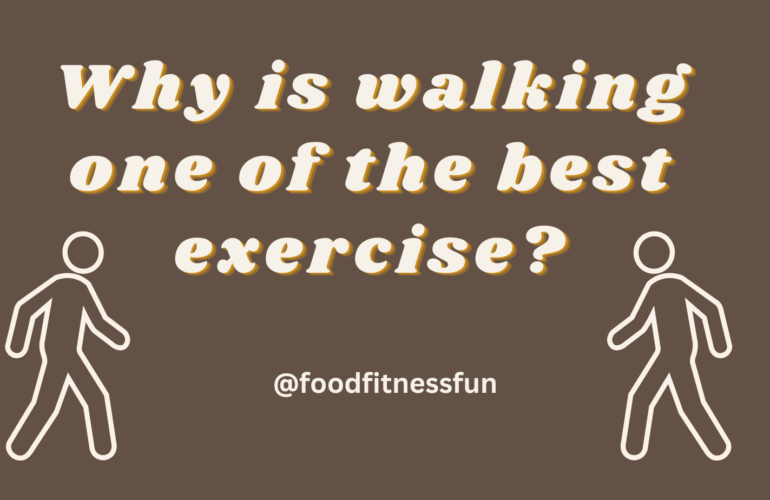In today’s fast-paced world, finding time for exercise can be a challenge. However, one activity stands out as a simple yet powerful solution for improving your overall health and well-being: walking. Walking is a natural and accessible form of exercise that requires no special equipment or skills, making it a perfect choice for people of all ages and fitness levels.
But what makes walking truly exceptional? In this article, we will explore the scientific reasoning behind why walking is considered one of the best exercises you can engage in. From boosting cognitive function to reducing the risk of depression, walking offers a myriad of benefits that extend far beyond just physical fitness.
We will delve into the remarkable effects of walking on the mind and body, backed by scientific research. Discover how a regular walking routine can enhance your learning abilities, protect against mental health disorders, help you shed unwanted fat, and even lower blood sugar levels.
Finally, we’ll shed light on the potential for inch loss through walking, as we explore the correlation between step count and weight management. By reaching a specific daily step goal, you can experience noticeable changes in your body composition and achieve your inch loss goals.
So, whether you’re a fitness enthusiast looking to maximize your exercise routine or someone searching for a manageable way to improve your health, this article will provide you with compelling reasons why walking deserves a prominent place in your life. Get ready to lace up your shoes and embark on a journey to discover why walking is truly one of the best exercises you can embrace for a healthier body and mind.
Pros of Walking.
- Increase Learning Speed by 25%: Walking has been shown to have positive effects on cognitive function and brain health. Engaging in regular physical activity, such as walking, increases blood flow to the brain, delivering more oxygen and nutrients. This enhanced blood flow promotes the growth of new neurons and the formation of connections between brain cells, which can improve cognitive abilities, including learning speed. Additionally, walking stimulates the release of endorphins and other neurotransmitters that enhance mood and focus, further contributing to improved learning abilities.
- Reduce the Risk of depression by 50%: Walking is known to have significant mental health benefits, including reducing the risk of depression. Physical activity, such as walking, increases the production and release of endorphins, which are natural mood-elevating chemicals in the brain. These endorphins help reduce feelings of stress, anxiety, and depression. Additionally, walking outdoors exposes individuals to natural sunlight, which boosts vitamin D levels. Low levels of vitamin D have been associated with an increased risk of depression, so regular walking can help mitigate this risk.
- Long walks utilize more fat %: Walking is an effective exercise for burning calories and reducing body fat. When engaging in longer-duration walks, the body primarily relies on stored fat as a fuel source. During aerobic activities like walking, the body gradually increases its use of fat for energy as the exercise continues. This process is beneficial for weight management, as it helps to decrease body fat percentage and improve overall body composition.
- Start Lowering Blood Sugar in 10 Minutes: Walking has been shown to have immediate effects on blood sugar levels. When you engage in physical activity like walking, your muscles use glucose (sugar) for energy. This helps to lower blood sugar levels as glucose is utilized by the muscles. Research has indicated that even a short 10-minute walk after a meal can have a significant impact on post-meal blood sugar levels, especially for individuals with diabetes or insulin resistance.
- Low impact, hence Easy on joints: Walking is a low-impact exercise, meaning it puts less stress on the joints compared to activities like running or high-intensity workouts. The act of walking allows for smooth and fluid movements, which reduces the risk of joint injuries and minimizes the wear and tear on cartilage and ligaments. This makes walking a suitable exercise for people of all ages and fitness levels, including those with joint issues or conditions such as arthritis.
- No Equipment or Skill Needed: One of the greatest advantages of walking as an exercise is its accessibility and simplicity. Walking requires no special equipment or specific skills. All you need is a comfortable pair of shoes, and you can start walking almost anywhere—whether it’s around your neighborhood, in a park, or on a treadmill. This makes walking a convenient and cost-effective exercise option that can be easily incorporated into a daily routine.
- May help in inch loss, if you hit 7-10k steps daily: Walking regularly and achieving a daily step count of 7,000 to 10,000 steps can contribute to weight loss and inch loss. Walking is a form of cardiovascular exercise that increases calorie expenditure, and by maintaining a consistent walking routine, you can create a calorie deficit over time. When combined with a healthy diet, this calorie deficit can lead to weight loss, including a reduction in inches around the waist, hips, and other areas of the body. The intensity and duration of walking can also impact the amount of calories burned, so brisk walking or incorporating hills can further enhance inch loss potential.
